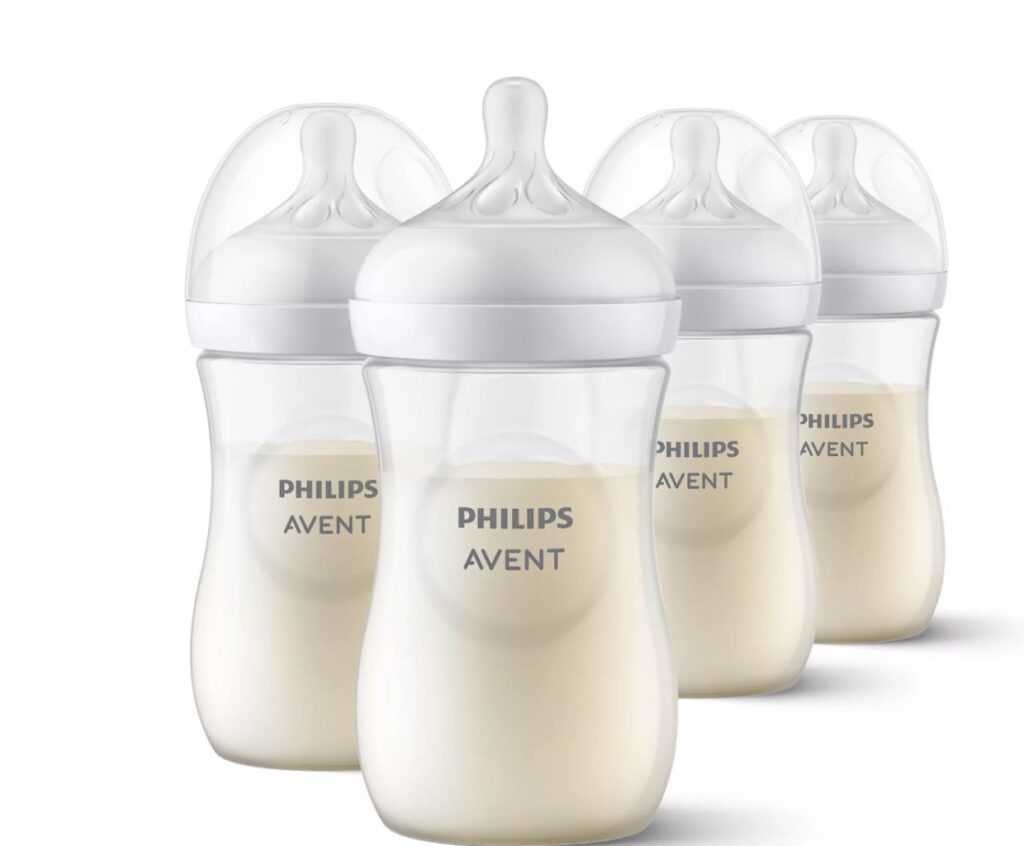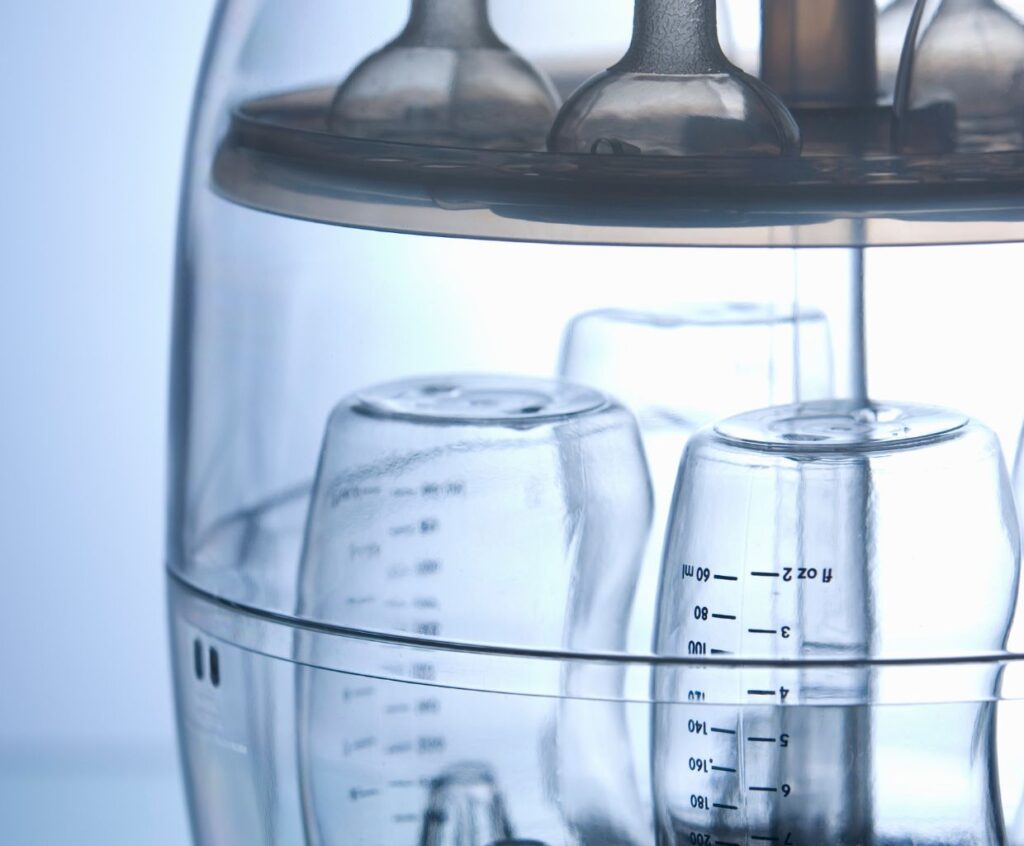Philips Avent Natural Response Bottles: A Gentle and Natural Feeding Solution for Your Baby
Feeding your baby is one of the most essential tasks as a parent, and finding the right bottle that provides a gentle and natural feeding experience is crucial. That’s where Philips Avent Natural Response Bottles come in.
These innovative bottles are designed to mimic the natural breastfeeding experience, offering a comfortable and seamless transition for your little one.

A Closer Look at the Features
What sets Philips Avent Natural Response Bottles apart from the rest? Let’s delve into their unique features:
-
- Natural Shape: The bottle’s nipple has a wide, breast-shaped design, allowing your baby to latch on naturally, like during breastfeeding.
-
- Flexible Nipple: The nipple is made of soft, flexible silicone, providing a natural and comfortable feel for your baby’s mouth.
-
- Anti-Colic Valve: These bottles have an anti-colic valve that vents air away from your baby’s tummy, reducing the risk of discomfort and colic.
-
- Easy to Clean: The bottles are designed with few parts, making them easy to assemble, disassemble, and clean. They are also dishwasher-safe for added convenience.
The Benefits for Your Baby
Using Philips Avent Natural Response Bottles can have several benefits for your baby:
-
- Smooth Transition: If transitioning from breastfeeding to bottle feeding, these bottles make the process easier by mimicking the natural breastfeeding experience.
- Comfortable Feeding: The natural shape and flexible nipple offer a comfortable and familiar feeding experience for your baby, reducing the chances of nipple confusion.
- Reduced Colic: The anti-colic valve helps prevent excessive air intake, minimizing the risk of colic and discomfort for your little one.
- Convenient and Hygienic: With easy-to-clean parts and dishwasher-safe materials, these bottles make feeding time hassle-free and maintain proper hygiene.
When it comes to feeding your baby, opting for a bottle that closely resembles the natural breastfeeding experience can make a difference. Philips Avent Natural Response Bottles combine innovation and comfort to provide a gentle and natural feeding solution for your precious little one. Give them a try and see the difference it can make in your baby’s feeding journey!
Philips Avent Natural Response Bottles vs. Classic: Which is Better?
When it comes to choosing between Philips Avent Natural and Classic bottles, it ultimately depends on your baby’s preference and feeding needs.
The Philips Avent Natural bottles are designed to mimic the breast’s natural shape, making it easier for babies to switch between breastfeeding and bottle feeding. The nipple of the Natural bottle has a wide shape and a flexible spiral design that promotes a more natural latch and feeding rhythm. These bottles also have an anti-colic valve, which helps reduce colic and discomfort.
On the other hand, the Philips Avent Classic bottles have a more traditional shape with a narrower nipple. These bottles are suitable for babies used to bottle feeding and may be easier for them to hold. The Classic bottles also have an anti-colic valve to reduce colic symptoms.
In terms of cleaning, both the Natural and Classic bottles are easy to disassemble and clean. They are also compatible with other Philips Avent products, such as breast pumps and sterilizers.
Ultimately, the better choice between the two bottle types depends on your baby’s preference. Some babies may prefer the broader nipple of the Natural bottles, while others may prefer the narrower nipple of the Classic bottles. It may be worth trying both types to see which one your baby prefers.
Tips for transitioning from breastfeeding to Philips Avent Natural bottles
Transitioning from breastfeeding to bottle-feeding can be challenging for both mom and baby. Here are some tips to help with the transition to Philips Avent Natural bottles:
1. Introduce the bottle gradually: Start by offering one feed daily while continuing to breastfeed for the other feeds. This will help your baby get used to the bottle without completely stopping breastfeeding.
2. Get your partner or a family member to give the bottle: Sometimes, babies associate mom with breastfeeding and may refuse the bottle when she offers it. Having someone else offer the bottle can help your baby accept it more easily.
3. Choose the proper nipple flow: Philips Avent Natural bottles come with different nipple flow options. Start with a slow-flow nipple to mimic the slower flow of breast milk. As your baby gets used to the bottle, you can gradually switch to a faster-flow nipple.
4. Warm the bottle: If your baby is used to warm breast milk, warming the bottle slightly may help the transition. You can use a bottle warmer or place the bottle in a bowl of warm water for a few minutes.
5. Hold your baby in a breastfeeding position: While bottle-feeding, try to hold your baby in a similar position as you would during breastfeeding. This can help your baby feel more comfortable and familiar during feeding.
6. Offer skin-to-skin contact: Skin-to-skin contact can help create a sense of comfort and security during feeding. Before offering the bottle, spend some time cuddling and having skin-to-skin contact with your baby.
7. Be patient and persistent: Your baby may take some time to transition to bottle-feeding fully. Be patient and keep offering the bottle consistently. Eventually, your baby will get used to it.
Remember, every baby is different, and what works for one may not work for another. Finding a method that suits your baby’s needs and preferences is essential.
How to clean Philips Avent Natural Response Bottles
Cleaning Philips Avent Natural bottles is a simple process that involves a few steps. Here’s how you can do it:
1. Disassemble the bottle: Start by removing the nipple, the nipple ring, and the bottle cap from the bottle.
2. Rinse with warm water: Rinse all the parts to remove any remaining milk or formula residue. This will make the cleaning process more manageable.
3. Wash with dish soap: Use a mild dish soap and a bottle brush to clean the bottle, nipple, and nipple ring. Make sure to scrub all the surfaces, including the inside of the bottle and the nipple holes. Pay extra attention to any areas with visible milk or formula buildup.
4. Rinse thoroughly: Rinse all the parts under running water to remove any soap residue.
5. Sterilize: To ensure proper hygiene, it is recommended to sterilize the bottles at least once a week or more frequently if your baby is younger than three months. You can sterilize the bottles using a sterilizer or boil them in water for about five minutes.
6. Air dry: After cleaning and sterilizing, leave all the parts to air dry completely. Avoid using a cloth or towel to dry them, as this can introduce bacteria.
7. Reassemble: Once the parts are dry, reassemble the bottle by placing the nipple into the nipple ring and attaching it to the bottle. Finally, put the bottle cap on.
Always follow the manufacturer’s instructions for cleaning and sterilizing your Philips Avent Natural bottles to ensure the best care for your baby.

